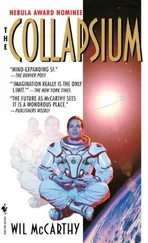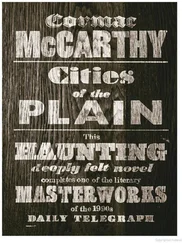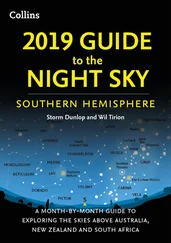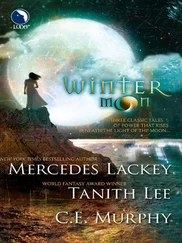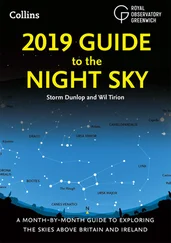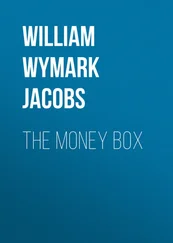The pale sand at the bottom of the ditch is very firm when his foot comes down straight on top of it. A sideways kick loosens it, though, revealing softer sand beneath. It appears, actually, to be a semisolid crust of larger particles sitting on top of a fluid of smaller ones. The trough is full of dried, dead vegetation, with mounds of light brown sand surrounding it.
He’s got to retract his thoughts about the lifelessness here, though, for on closer inspection he sees that the dunes are crisscrossed with little tracks. The shapes and even sizes of the footprints have been lost—blurred out by the shifting sand—and there’s no other clue to their identity. Ironically, the plants here in the trough look edible and even succulent: desert species of pea and rice and pepper, perfectly adapted to sucking moisture out of this environment.
He hasn’t seen a termite mound anywhere, but here in the trough he does see a few individual blue-on-clear specimens, carrying not only seeds and wood fragments but also the body of some larger insect he’s not sure he recognizes. Or perhaps it’s a little machine, not truly organic at all, and the termites will go hungry tonight. In any case it’s balanced along three blue-and-clear backs, and moving steadily toward whatever home the termites have here.
“Industrious and hungry,” says Bruno, looking down at the marching line, and Radmer can see how strange these engineered creatures must seem to him, who grew up on an Earth still mostly natural.
“Food for something else,” he counters, for ultimately that’s the only purpose any animal serves in this ecology. Or any ecology.
One set of animal tracks, clearly left by a kangaroo rat, consists of paired footprints, very small, with a linear drag mark between, as from a little tail. The footprints terminate in a fist-sized mound of undisturbed sand, and Conrad supposes the thing has buried itself there to wait out the day’s rising heat. In summer this place must be an oven! But Radmer can see, again with his terraformer’s eye—how a big, hungry creature like himself could make his living out here. Reaching an arm into the sand to pull out mice and lizards, garnishing them with desert rice and desert peas and cooking them over half-fossilized driftwood, with the woody, nutty taste of termites for dessert… The eye of the Stormlands would be hard-pressed to support a large population—as the empty city of Manassa can attest!—but there’s enough energy here to sustain a small band of frugal hermits.
Would it make them hard? Vicious?
“Keep your eyes open,” he suggests to Natan, quite unnecessarily since the Dolceti have no other job. “This place isn’t exactly lifeless.”
“If there’s boogeymen,” Natan agrees cheerfully, “I’ll hold ’em off.”
Radmer isn’t kidding, but neither is Natan, so he lets it go.
“There’s good clean air here,” Natan adds approvingly. “Nice for my allergies. Don’t worry yourself, General.”
Surprisingly, an hour later they’re only about halfway to the area Radmer has identified as the “top” of the dune field. If there are more and higher peaks behind those, he doesn’t want to know about it! But it seems they have arrived at the outskirts of Manassa; a corner of wellstone juts up half a meter from the sand.
“Declarant,” Radmer says to Bruno, pointing out the anomaly.
“Ah,” says the former king, rubbing his hands together. “Well, well. What have we here?” He kneels next to the object and brushes some of the sand away from it. “It’s dead, for starters, but so are a lot of things. Wake up, you!” And when that doesn’t work, he taps it forcefully, several times. “Hello? Activate!” This, at least, produces a brief flicker of color.
Bruno looks back at Radmer. “You used to know these things, Architect. Have you any ideas? It’s getting plenty of sunlight, so it should—”
“ This piece is getting plenty of sunlight,” Radmer says, and for a moment he sounds like Conrad Mursk, even to himself.
“Ah!” Bruno agrees, liking that answer quite a lot. “This piece is getting plenty of sunlight, but we have no way of knowing how far down the structure extends. It’s browning out! This little sliver may be attempting to power an entire building, yes? Or else it really is dead, but let’s start with what we know. Natan, will you break off a piece for me? This way, if you please, not that way.”
But it proves more difficult than he’d expected; against even dead wellstone, mere human strength is rather slight. But with swords and feet and a great deal of grunting and heaving, the three men manage to break off a shard that fits neatly into Bruno’s hand, with edges dull enough that Radmer doesn’t fear he’ll cut himself.
But still, the fragment refuses to respond with anything more than flickers of green and a faint, faint crackling noise. Finally, in exasperation Bruno says, “Listen, you, this is a Royal Override. Shut down all resident programs and boot up in command line mode.”
Strangely enough, that works. Yellow letters and numerals appear on the flat surface, and in another moment Bruno is tapping the shard with three fingers in rapid sequence, keying in a set of basic configuration commands. The thing, already shiny rainbow-black in his hands, turns the color of a solar tree: superabsorber black. Then it begins to change in more sophisticated ways; colors shoot along its length as it reconfigures itself, layer by nanoscopic layer.
“God’s eyes!” Natan curses, watching the fragment flicker and change. “I never quite believed in sorcerers!”
Bruno looks up in annoyance. “Eh? Is it sorcery to spill ink on a page? To rot an apple? To stand in the sun and turn your ‘human’ skin as white as milk? No? Then I’m no sorcerer, Deceant. This object is a tool, like a special sort of window glass. Nothing more.”
“So you say,” Natan mutters, looking as though he’d prefer to take a step or two backward. But this Older is his responsibility, through death or worse. He stands his ground. “But in the stories, it’s only Tara and Toji who can command the stones. ‘Roylovride,’ yeah, that’s the magic word.”
Bruno turns away in weary disappointment. “Believe what you like. I don’t suppose it matters.” To the fragment in his hand he says, “Run standard sensor package. Run any sensor package. Run sensor diagnostic.” Then, when these fail to work, he casts an annoyed look at Radmer and says, “Do you know anything about sensor design?”
And although Conrad Mursk did time in two different navies, in deep-space and deep-solar atmospheres—places where wellstone sensors were the difference between life and death—it never really rubbed off on him. He was remarkably bad at a remarkable number of things, which in the end is why he’s ended up here, why the world is the way it is.
“No,” says Radmer. “I wish I did.”
“Hmm. Well.” Bruno plops his ass down in the sand and peers at the fragment for several long minutes. “There’s information buried inside you,” he mutters to it at one point. “Libraries of it. You know things; you just don’t know you know them.”
He sits there, fumbling and muttering, for what seems like a long time. Then, finally, perhaps an hour after sitting down, he rises again and brushes the dust off himself.
“Have you got it working?” Radmer asks, trying not to sound weary or ungrateful.
“Not properly, no,” Bruno answers with obvious irritation. “I’m trying to map the city by composition, and it’s just not working. But I’ve located something that might make the job easier.”
“Yes? What’s that?”
“A working fax machine,” Bruno says, as though it isn’t good news at all.
Читать дальше

